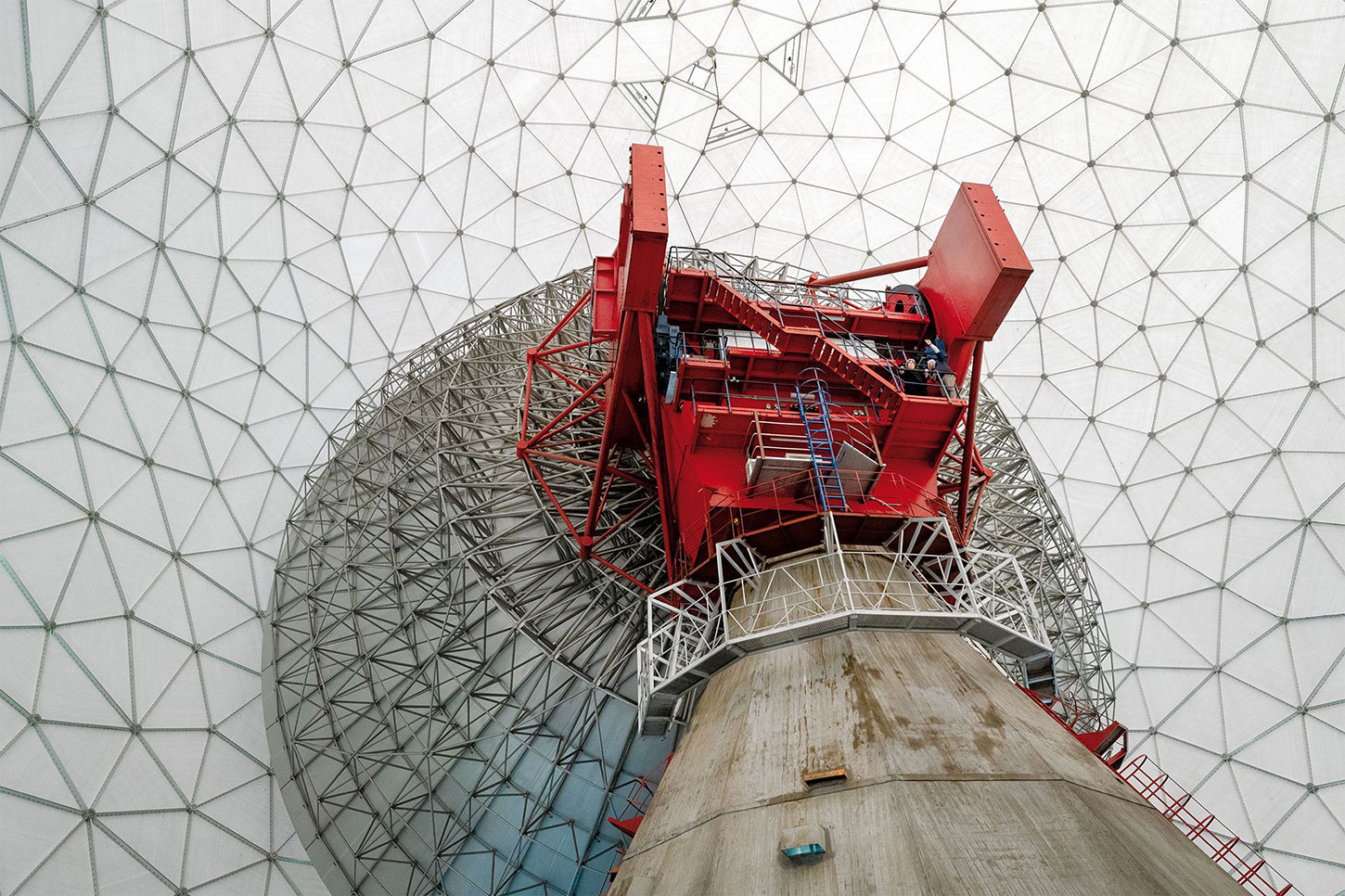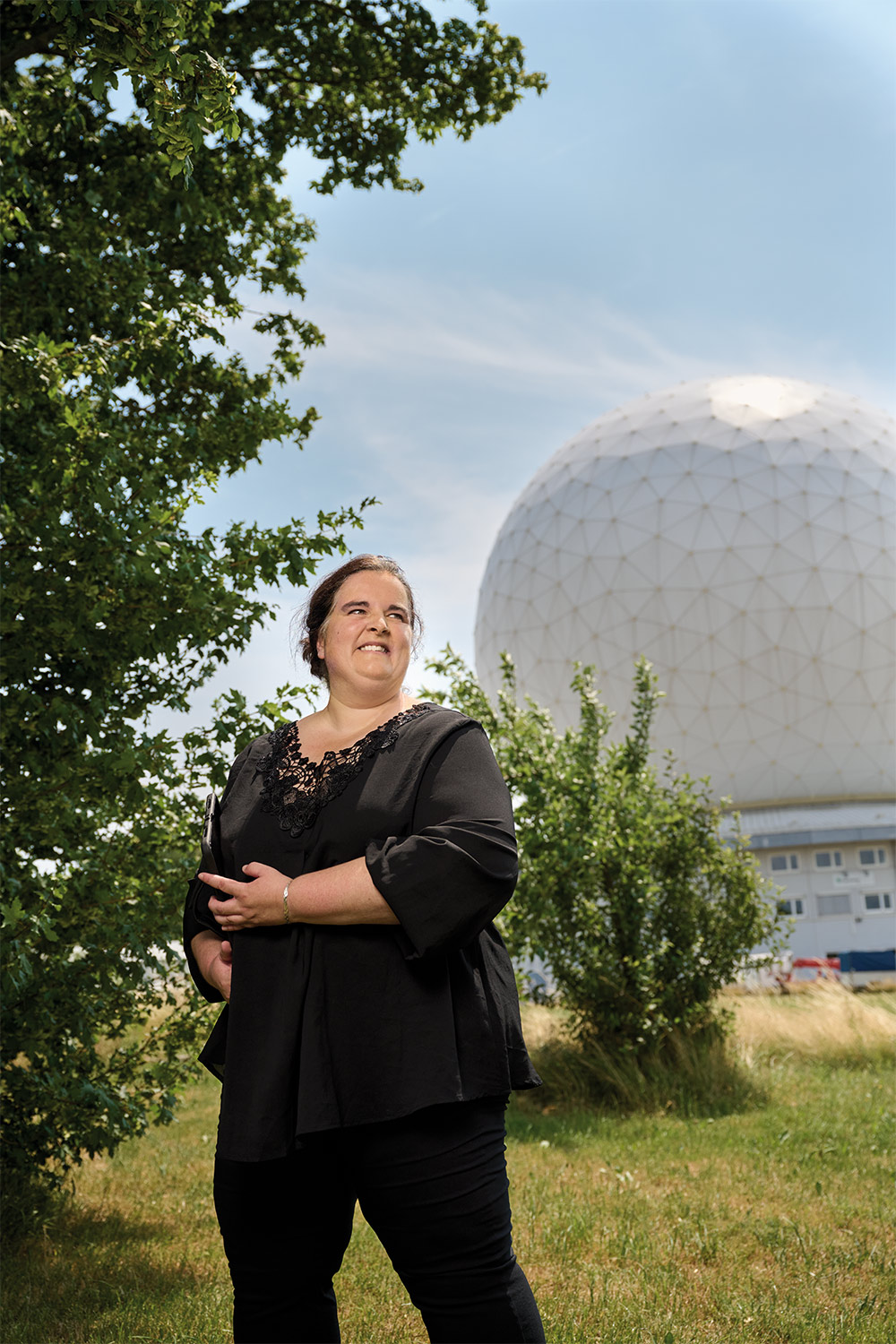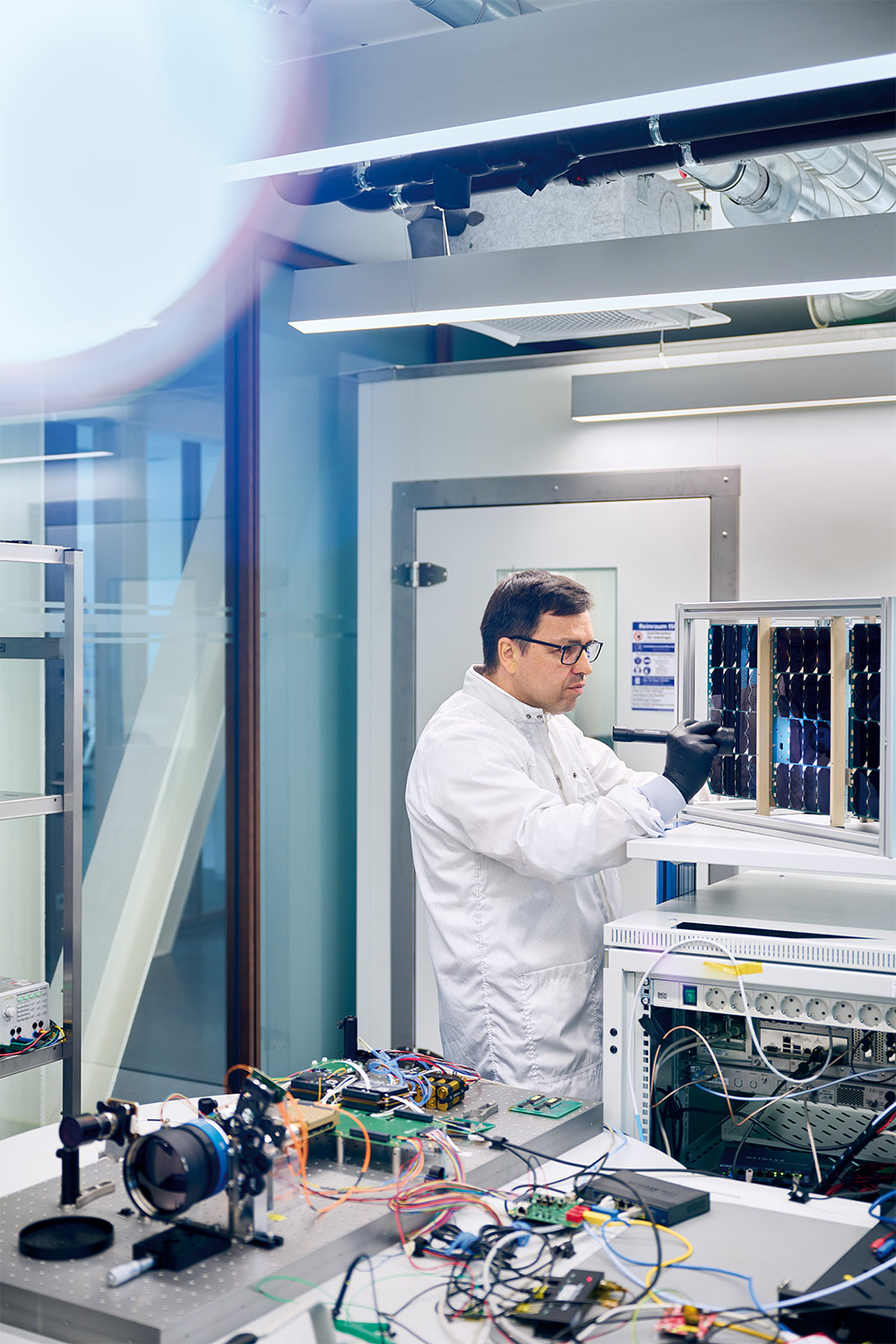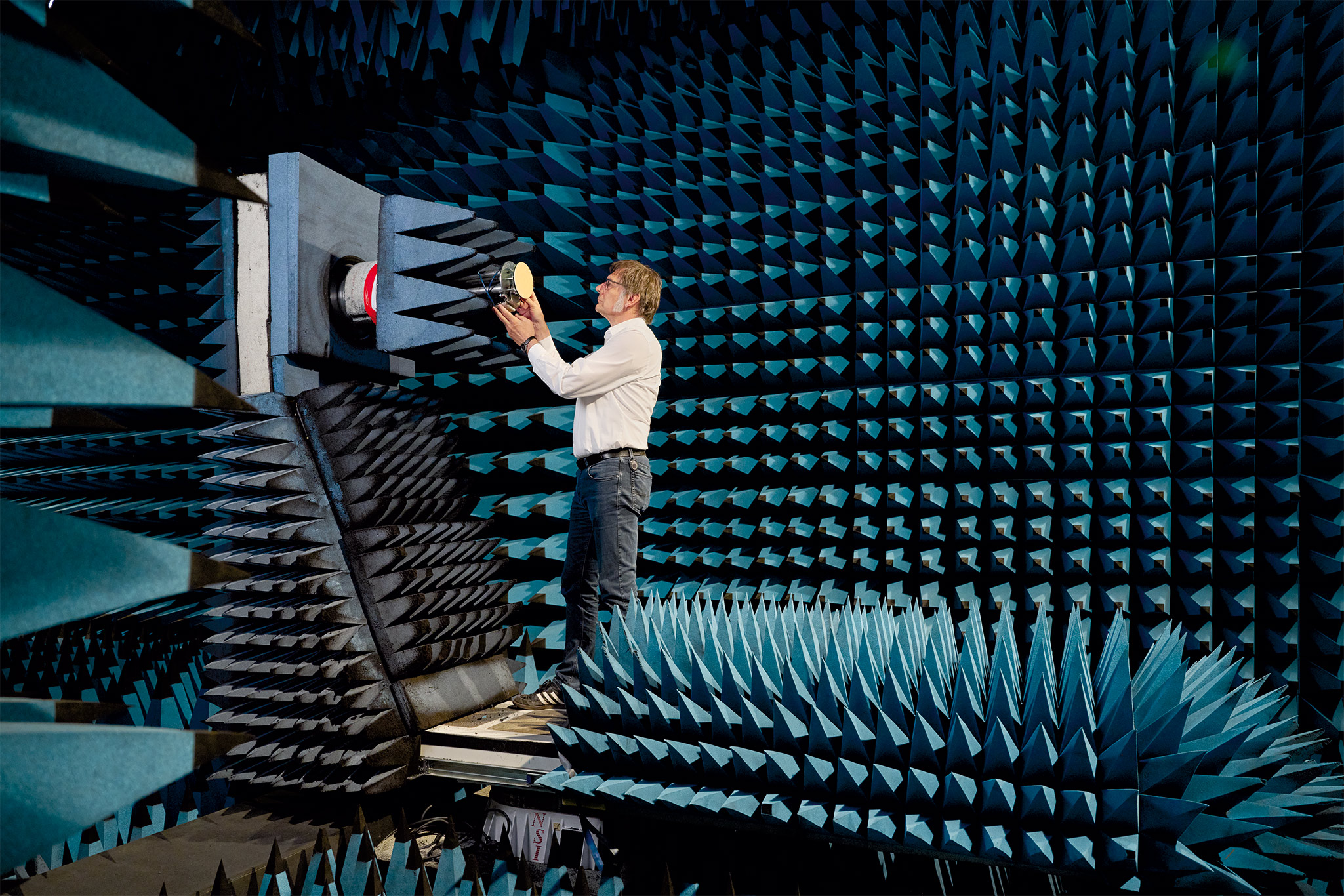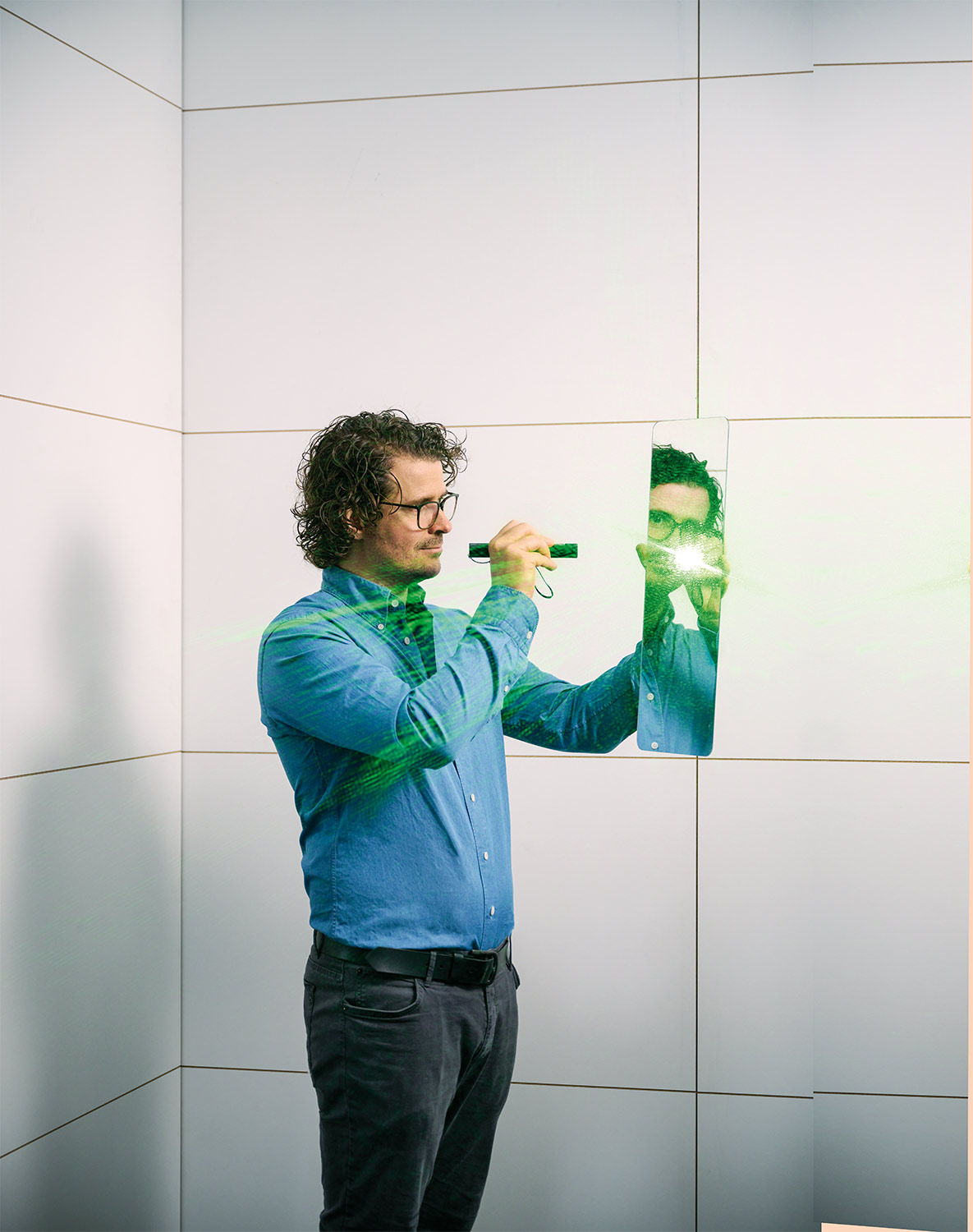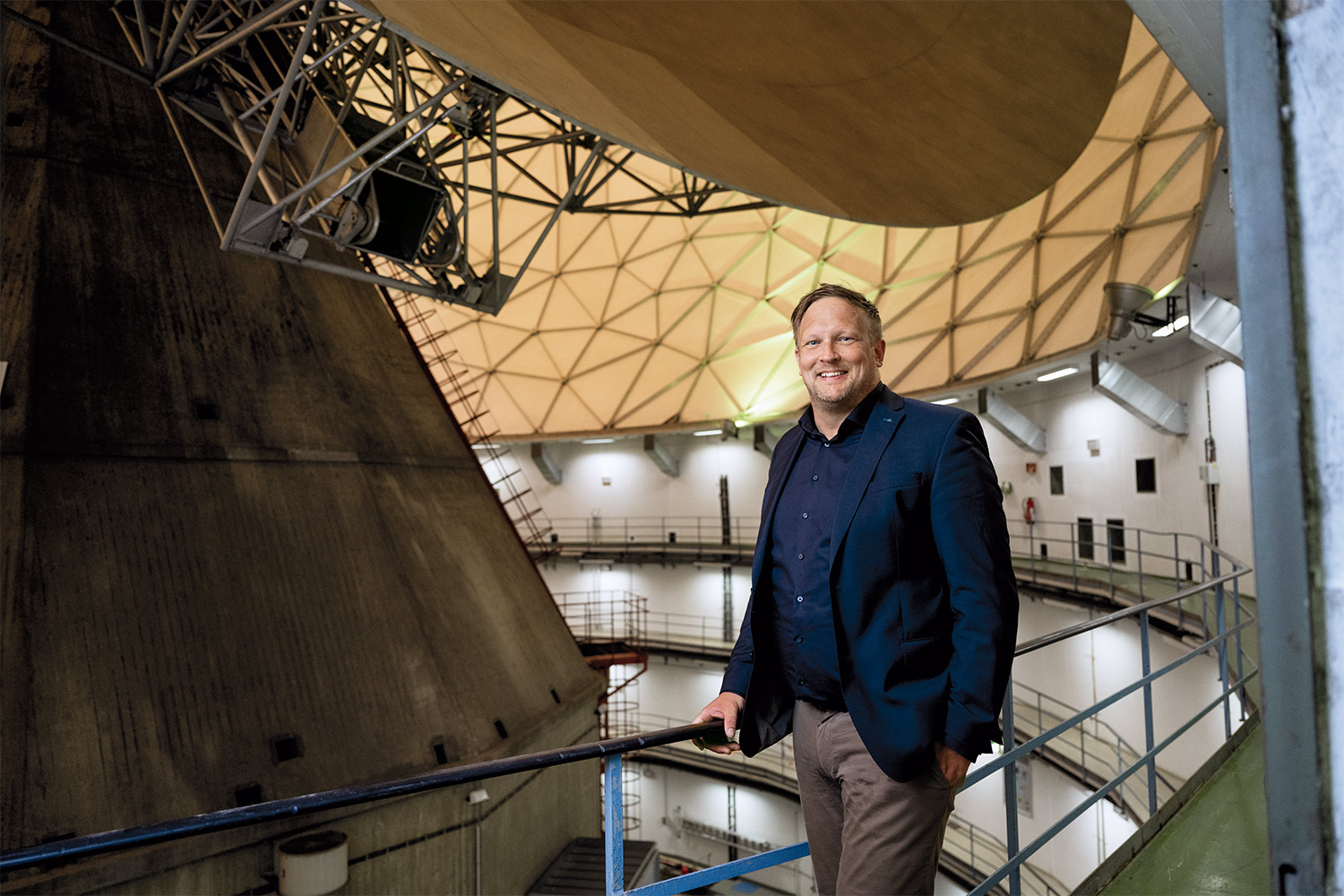Long-distance, by day or night
Quantum keys can already be seamlessly exchanged over shorter distances at ground level. However, global quantum communication would require longer ranges that could span continents. This remains a challenge − too many of the fragile light particles go astray. At Fraunhofer IOF, Dr. Fabian Steinlechner and his team are working on multiple parallel projects in search of some solutions. For example, they are developing space-suitable miniaturized photon sources the size of a milk carton − these act as a transmitter on board satellites, generating entangled light rays and sending them to Earth. These rays are received at the ground station by optical reflecting telescopes the size of a TV satellite dish. From there, they enter the fiber optic network to be distributed to the receivers. The optics experts are working with eight European and Canadian research partners to further develop quantum communication via free beam into scalable global quantum networks. “In the Hyperspace project, we’re creating preliminary designs for transmitting entangled photons over longer distances of 6,000 kilometers and more. This includes, for example, noise-resistant quantum state encoding, as well as hyperentanglement, where the particles are mutually entangled across not one, but multiple characteristics. That could make information transfer both quicker and more efficient.”
However, optical communication via satellite faces three hurdles: sunlight, clouds and atmospheric turbulence. These can significantly reduce the quality of light signals or diminish visibility. To receive usable signals even during daylight hours, the quantum experts apply various filters: “Because we know the direction and point in time from which the data signals were transmitted, we can use spatial and temporal filters to distinguish them from sunlight and filter them out,” explains Dr. Steinlechner. “In addition, spectral filters allow the spectrum to be narrowed to the relevant wavelengths.”
Light rays distorted by turbulence can be corrected using adaptive optics (AO). Picture these like small, flexible deformable mirrors located within the receiving telescopes − they are reshaped using multiple positioning elements to precisely align the light ray so that it can be received by the telescope. These AO mirrors allow the light to be focused even more exactly and directed into a fiber optic cable about two millimeters in diameter. The biggest challenge yet to be resolved is that of clouds, as they often completely block the optical signals. According to Dr. Steinlechner, it could help to include redundancies in the form of other technologies such as radio or diversions to other satellites positioned over cloud-free regions. The quantum keys can also be created in advance so that secure communication is not necessarily dependent on cloud cover.
All of this means quantum communication is still too technologically complex to provide secure universal broadband connections. “Just as quantum computers are not going to replace smartphones, quantum communication will not replace conventional communication technologies,” says the researcher. He believes the technology will reach sufficient maturity by 2027, when IRIS2 will launched, but only for specific areas of application. For example, European satellites could be used to create a temporary high-security internet for especially security- critical applications or events such as the G7 summit. The research team recently demonstrated how this can be done by carrying out a key experiment as part of the QuNet initiative, which is funded by the German Federal Ministry of Education and Research (BMBF). The experiment involved creating an ad-hoc network between three locations in Jena, through which they were able to establish tap-proof communication.
